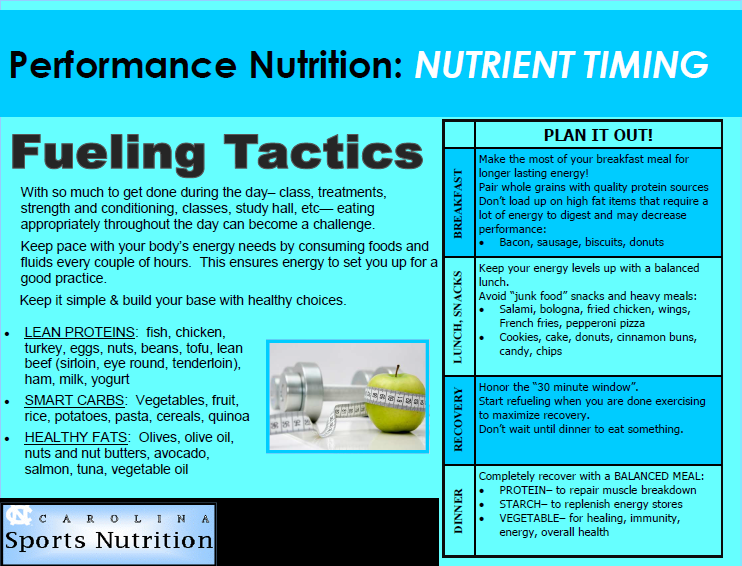
Here at Healthy Heels, we view food as fuel, nourishment, and something to be enjoyed. We encourage Tar Heels to eat a wide array of foods that are both nourishing and delicious. There are no bad or forbidden foods – it’s all about paying attention to your body’s needs.
Eat When You’re Hungry
Keep your body biologically fed with enough nourishment. This helps avoid the natural response to over-consume food in moments of excessive hunger. Learning to honor your initial biological signal of hunger sets the stage for building trust in yourself and in food.
- Help yourself by bringing yummy, nutrient-dense snacks with you so that when you notice hunger, you have food available.
Enjoy Your Food
Feel the pleasure and satisfaction that can be found in the eating experience. Some studies indicate that when you look forward to the food that you’re about to eat, your body absorbs more of its nutrients. Plus, eating food you enjoy in a pleasurable environment helps you feel satisfied and content.
Stop Eating When You’re Full
Trust yourself with eating and listen to your body. Your body will tell you what foods you need and when it needs them no longer. Observe the signs that show that you’re comfortably full. Pause in the middle of eating and ask yourself how the food tastes, and check in on your current level of hunger.
Use Gentle Nutrition Strategies
- Zoom out. Focus on the big picture when it comes to nutrition. Individual food choices make very little difference when it comes to health. You will not suddenly get a nutrient deficiency or become unhealthy from one snack, one meal, or one day of eating. It’s what you eat consistently over time that matters. Consider overall patterns in your food intake.
- Add foods, don’t subtract. Remember that all foods can be a part of a healthy life and no foods are off-limits. Instead, consider how to add nutrient-filled and diverse foods into your eating patterns.
- Focus on variety. Different foods contain different nutrients, which means that eating a diversity of foods helps to ensure that we are getting adequate nutrients.
- Pay attention to food that feels good. Make food choices that honor your health and taste buds while making your body feel good.
- Try to include at least 2 food groups at each snack. This will help keep you nourished.
- Create an environment that makes health easier. Your environment is the biggest predictor of your health choices, so consider how you can make shifts to your space to set yourself up for the health behaviors you want.
Nourishing your body means recognizing and responding to your body’s needs while enjoying a wide array of delicious, nutritious foods. By practicing mindful eating, you can develop a healthy relationship with food and promote your overall well-being.











